This upstate São Paulo retreat is designed as three light pavilions
YJD House by Jacobsen Arquitetura is an upstate São Paulo retreat that celebrates its green context through lightness and minimalism
Fernando Guerra - Photography

Upstate São Paulo's green nature, rolling hills and smaller, sleepy towns offer respite to many São Paulo residents who have second homes there. This was also the case with YJD House, a countryside weekend home for a family that was after a place to escape the big city. Designed by Jacobsen Arquitetura, the house offers just that – a dramatic, yet minimalist upstate São Paulo retreat that allows the eye to travel and the soul to relax within a backdrop of green nature, which the design puts centre stage.
The house is conceived as three, seemingly independent pavilions, which are in fact connected through a series of pathways and covered routes. This helps the interior be divided into two main sections – the main house, which is split into a private and more entertaining-orientated pavilion, and the guest house. This arrangement also makes the fairly generous structure – at over 2,000 sq m – feel lighter and more permeable, sitting softly on its land and feeling less intrusive against the greenery. From afar, this appears like a one-storey house, but upon closer inspection, two levels are revealed.

Making the most of the site's enviable position and natural landscape, the architects placed the building on top of a hill, allowing long views from every point in the house. To this end, there are plenty of outdoor areas scattered across the floorplan – terraces, gardens, smaller patios and a swimming pool deck all offer opportunities for spending time outdoors.
‘To [allow residents to] enjoy the day, we created a pool house in the annex, located at a lower level of the land, following the slope of the site,’ the architects say. ‘With an extensive programme of leisure areas, such as a gourmet kitchen with a wood stove, a spa, and a playroom, in addition to the swimming pool, this space was a special requirement made by the clients, who wanted to throw large parties and set up meetings in there.'
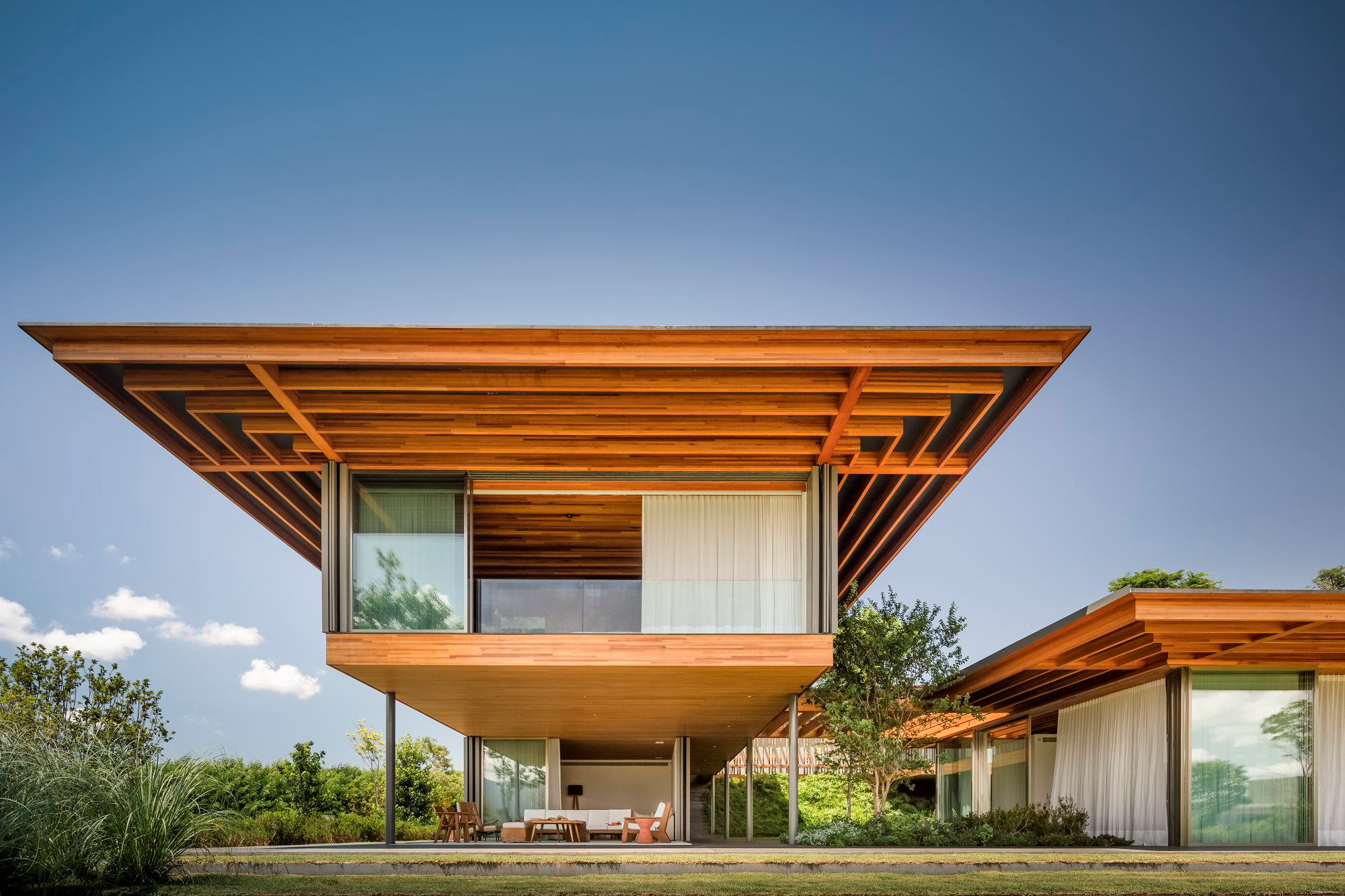
Materiality was also important in the design development. There is a mix of concrete and metal surfaces, but timber becomes the real protagonist, appearing on ceilings, walls and bespoke elements in various parts of the structure. ‘I think one of the great challenges of this project was the desire of making a two-storey cantilevered house appear to be made entirely of wood, even though it is not,' says the studio's founder, Bernardo Jacobsen.
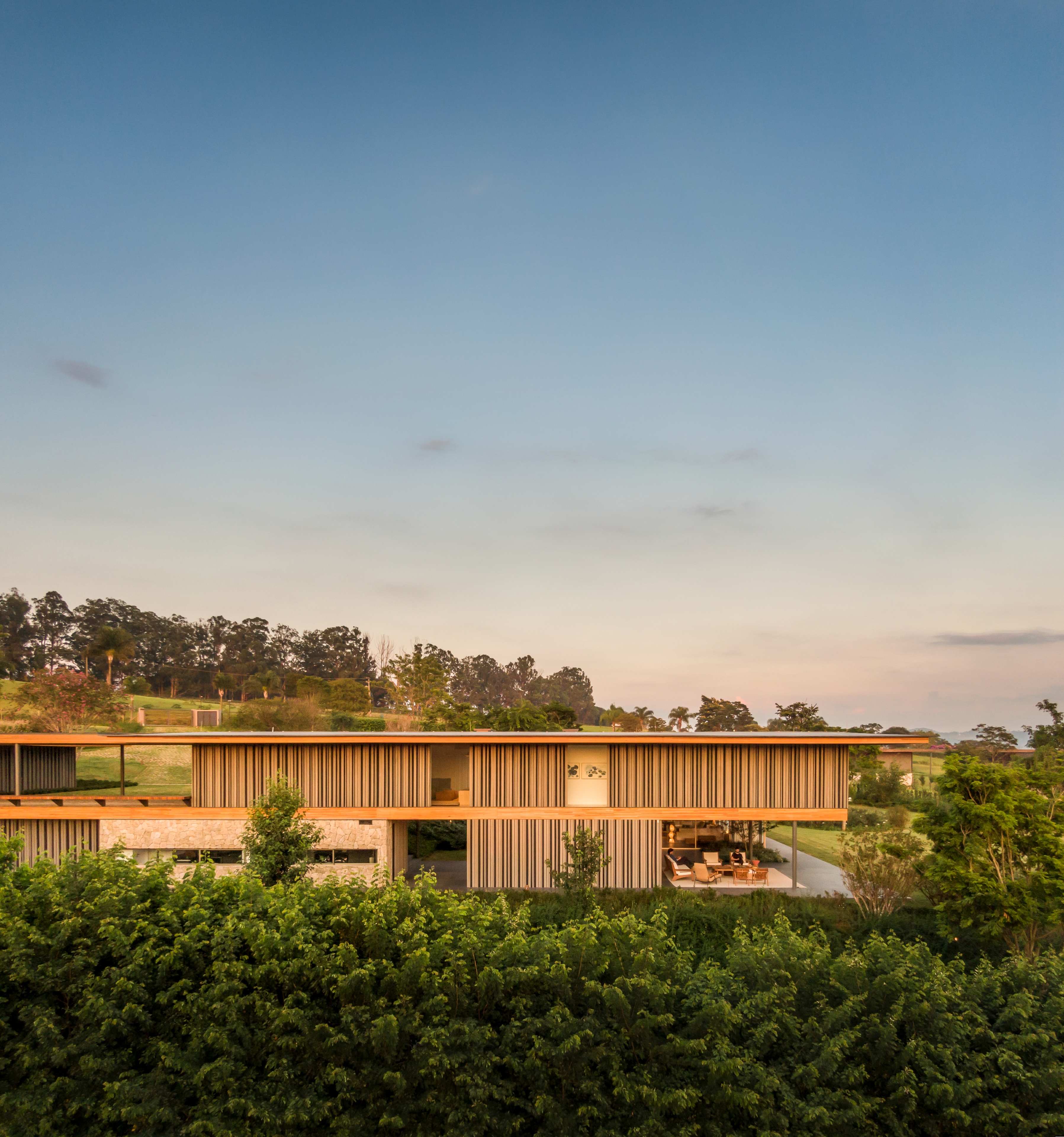

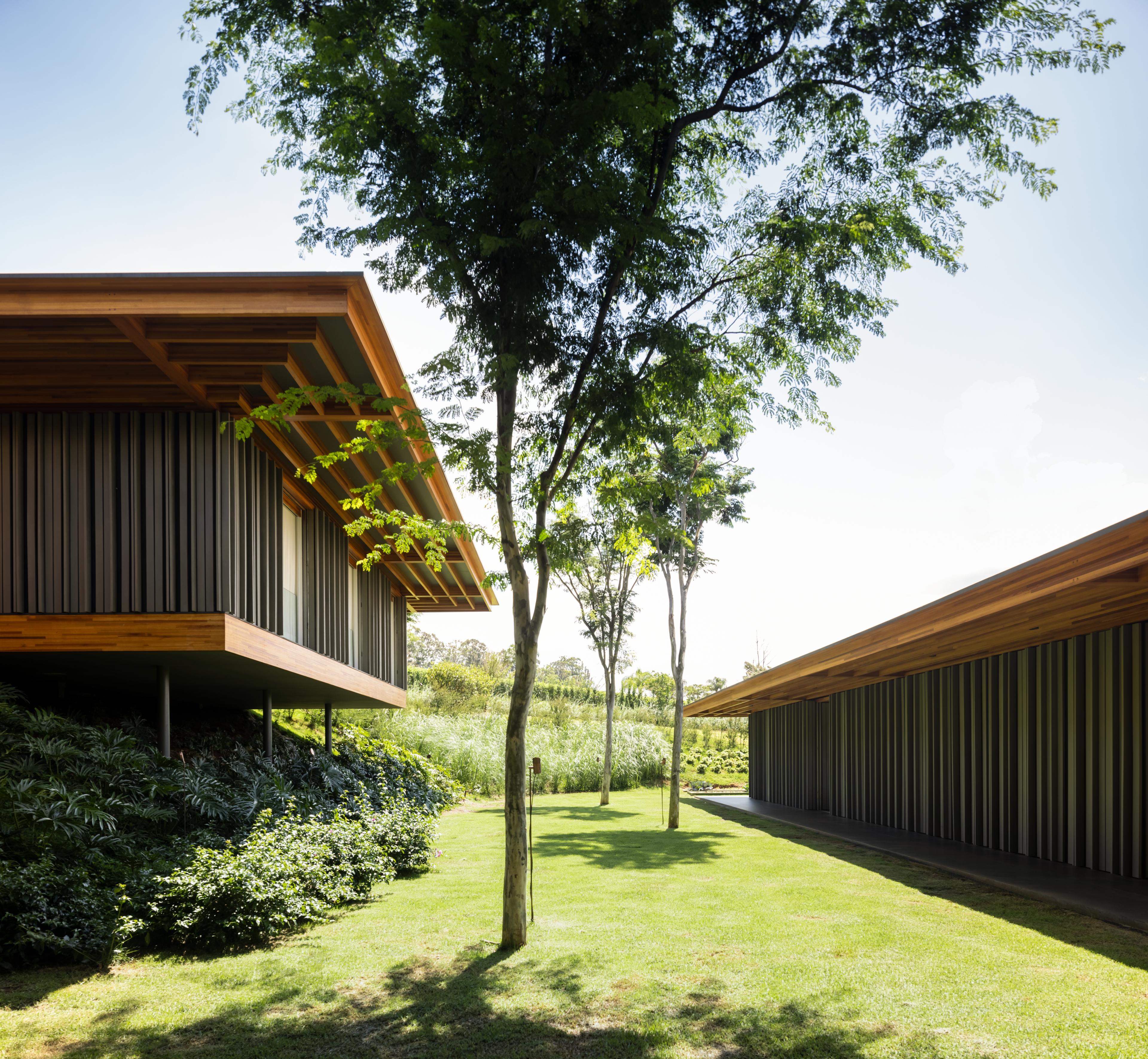


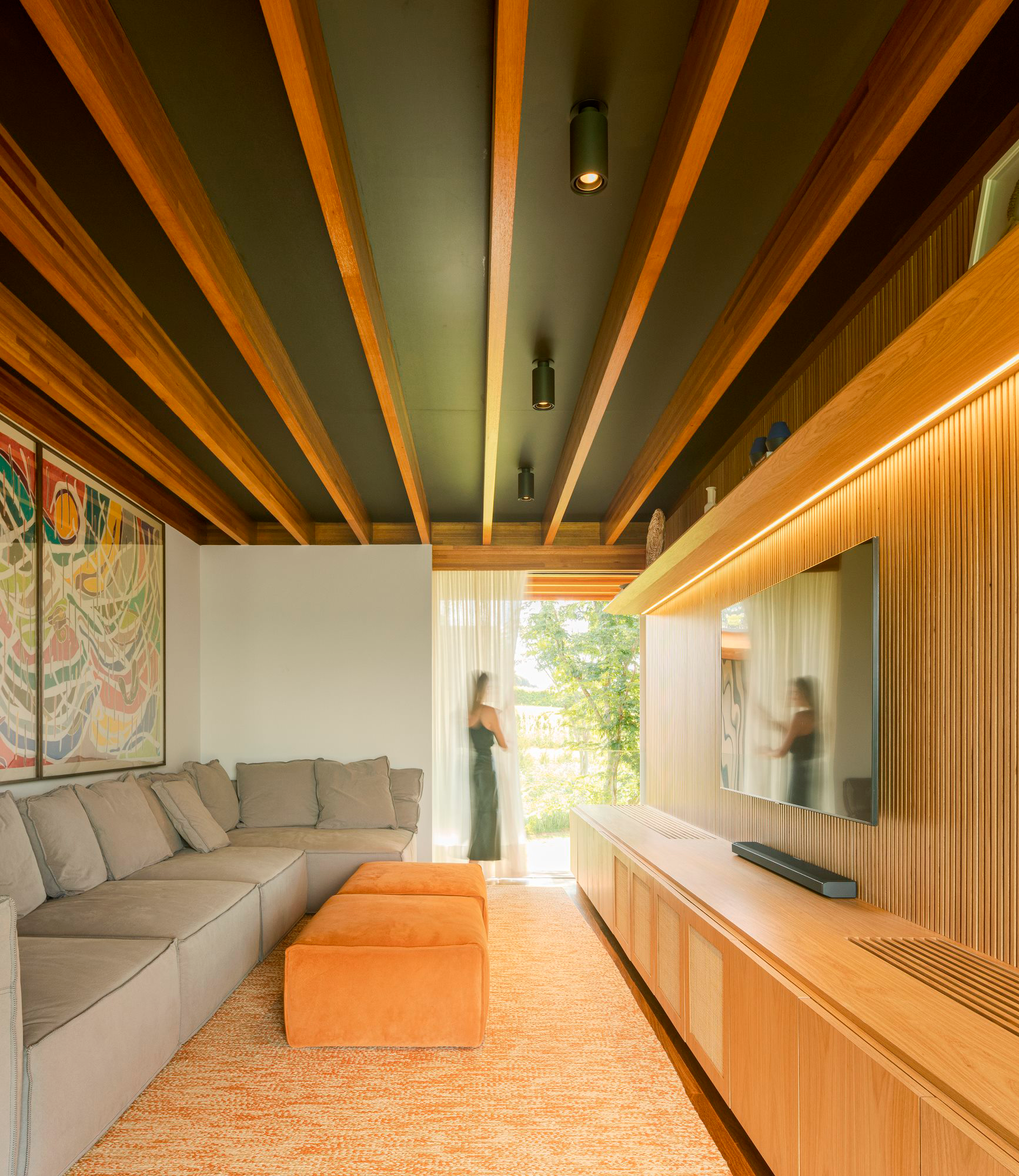
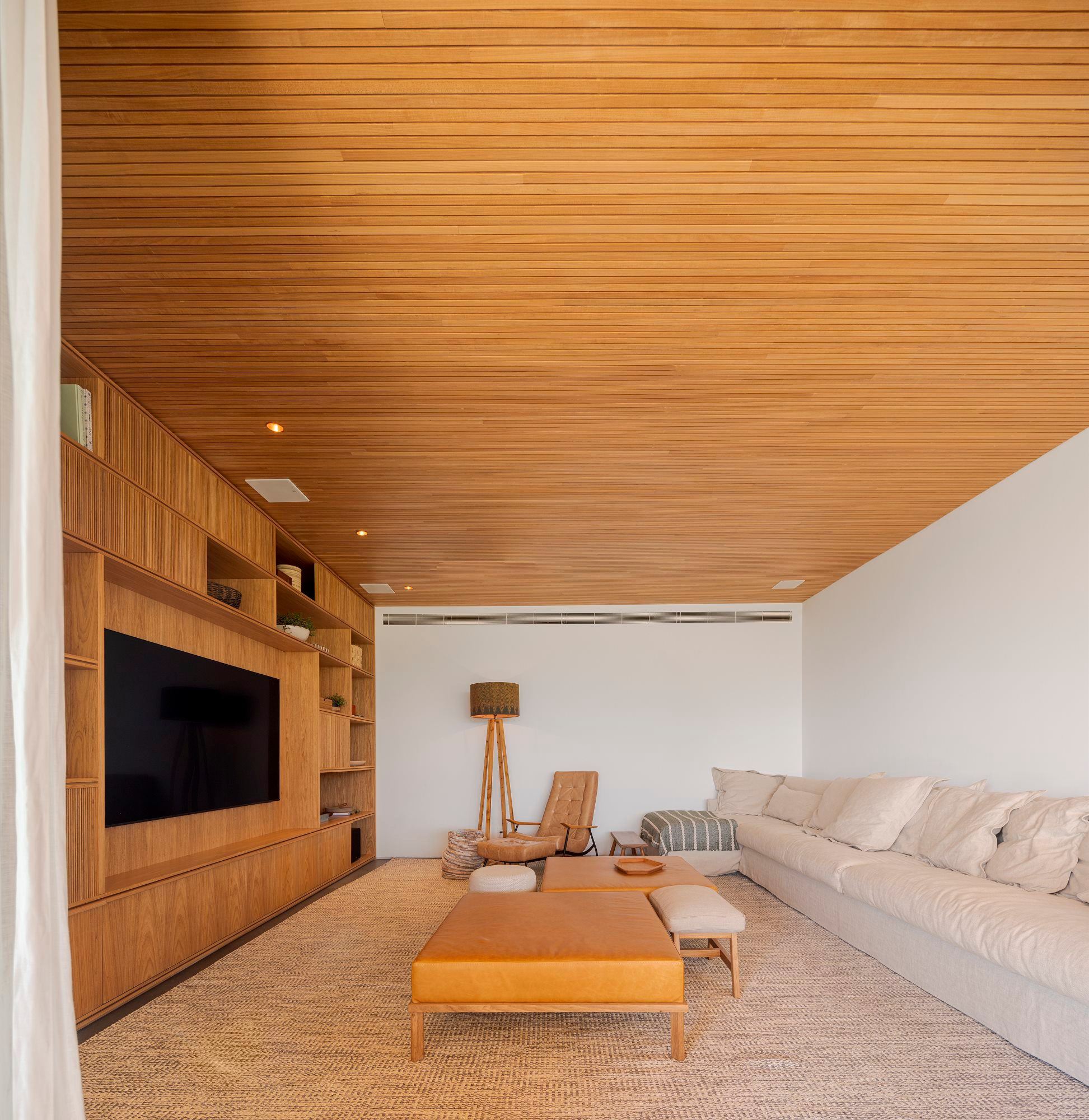
INFORMATION
Receive our daily digest of inspiration, escapism and design stories from around the world direct to your inbox.
Ellie Stathaki is the Architecture & Environment Director at Wallpaper*. She trained as an architect at the Aristotle University of Thessaloniki in Greece and studied architectural history at the Bartlett in London. Now an established journalist, she has been a member of the Wallpaper* team since 2006, visiting buildings across the globe and interviewing leading architects such as Tadao Ando and Rem Koolhaas. Ellie has also taken part in judging panels, moderated events, curated shows and contributed in books, such as The Contemporary House (Thames & Hudson, 2018), Glenn Sestig Architecture Diary (2020) and House London (2022).
-
 We asked six creative leaders to tell us their design predictions for the year ahead
We asked six creative leaders to tell us their design predictions for the year aheadWhat will be the trends shaping the design world in 2026? Six creative leaders share their creative predictions for next year, alongside some wise advice: be present, connect, embrace AI
-
 10 watch and jewellery moments that dazzled us in 2025
10 watch and jewellery moments that dazzled us in 2025From unexpected watch collaborations to eclectic materials and offbeat designs, here are the watch and jewellery moments we enjoyed this year
-
 Patricia Urquiola reveals an imaginative inner world in ‘Meta-Morphosa’
Patricia Urquiola reveals an imaginative inner world in ‘Meta-Morphosa’From hybrid creatures and marine motifs to experimental materials and textiles, Meta-Morphosa presents a concentrated view of Patricia Urquiola’s recent work
-
 A spectacular new Brazilian house in Triângulo Mineiro revels in the luxury of space
A spectacular new Brazilian house in Triângulo Mineiro revels in the luxury of spaceCasa Muxarabi takes its name from the lattice walls that create ever-changing patterns of light across its generously scaled interiors
-
 A Brasília apartment harnesses the power of optical illusion
A Brasília apartment harnesses the power of optical illusionCoDa Arquitetura’s Moiré apartment in the Brazilian capital uses smart materials to create visual contrast and an artful welcome
-
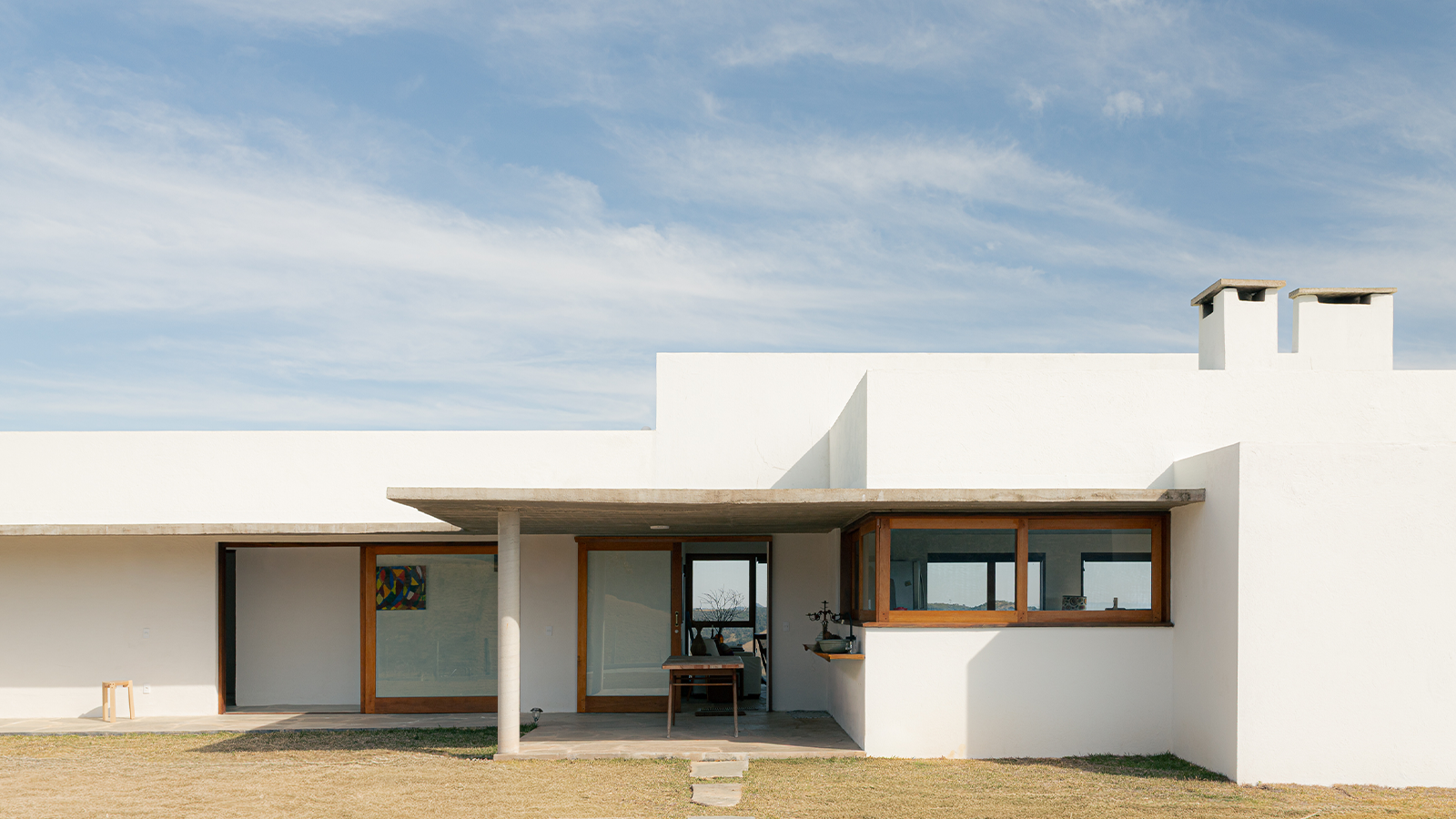 Inspired by farmhouses, a Cunha residence unites cosy charm with contemporary Brazilian living
Inspired by farmhouses, a Cunha residence unites cosy charm with contemporary Brazilian livingWhen designing this home in Cunha, upstate São Paulo, architect Roberto Brotero wanted the structure to become 'part of the mountains, without disappearing into them'
-
 Tropical gardens envelop this contemporary Brazilian home in São Paulo state
Tropical gardens envelop this contemporary Brazilian home in São Paulo stateIn the suburbs of Itupeva, Serena House by architects Padovani acts as a countryside refuge from the rush of city living
-
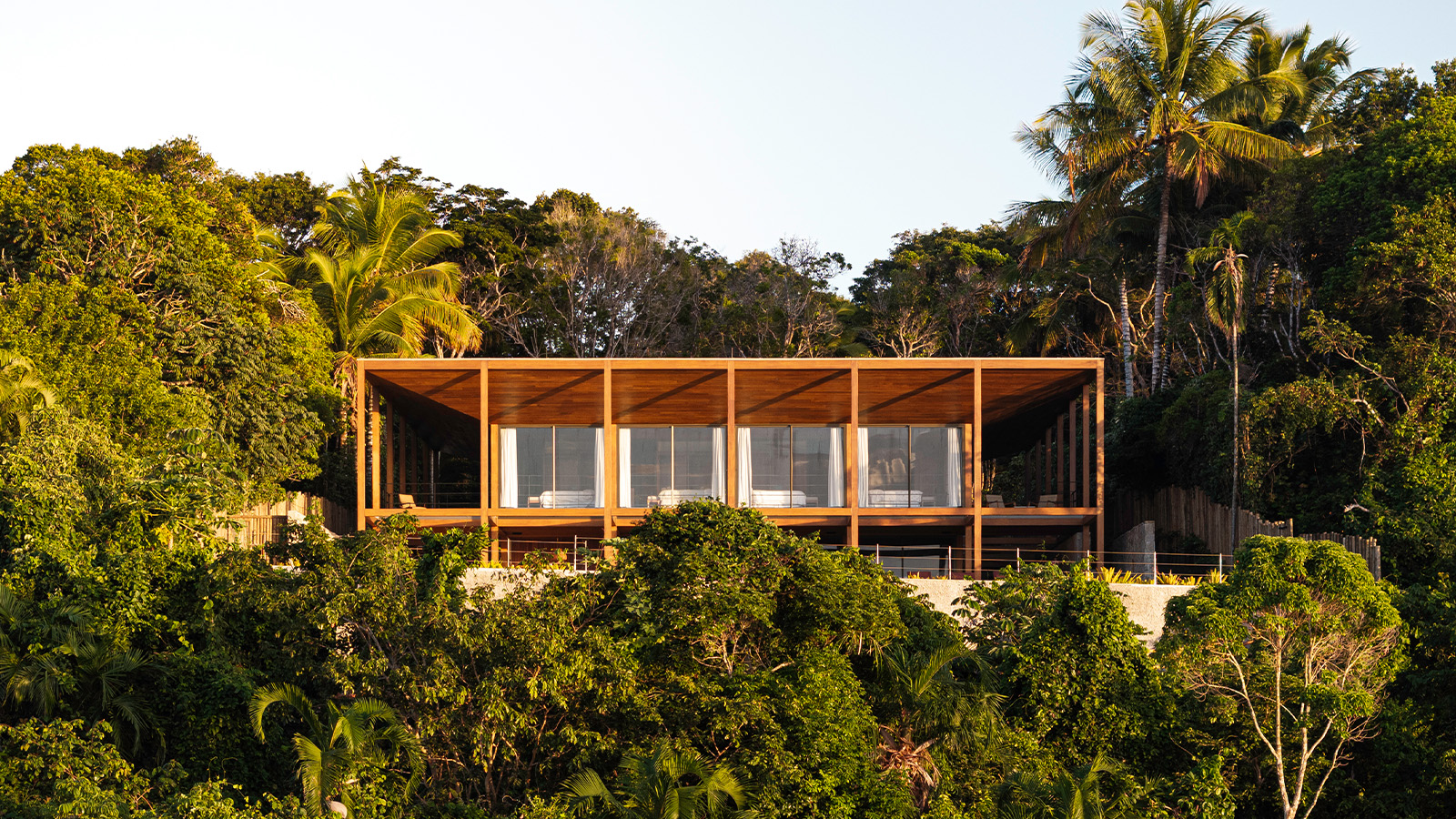 Itapororoca House blends seamlessly with Brazil’s lush coastal landscape
Itapororoca House blends seamlessly with Brazil’s lush coastal landscapeDesigned by Bloco Arquitetos, Itapororoca House is a treetop residence in Bahia, Brazil, offering a large wrap-around veranda to invite nature in
-
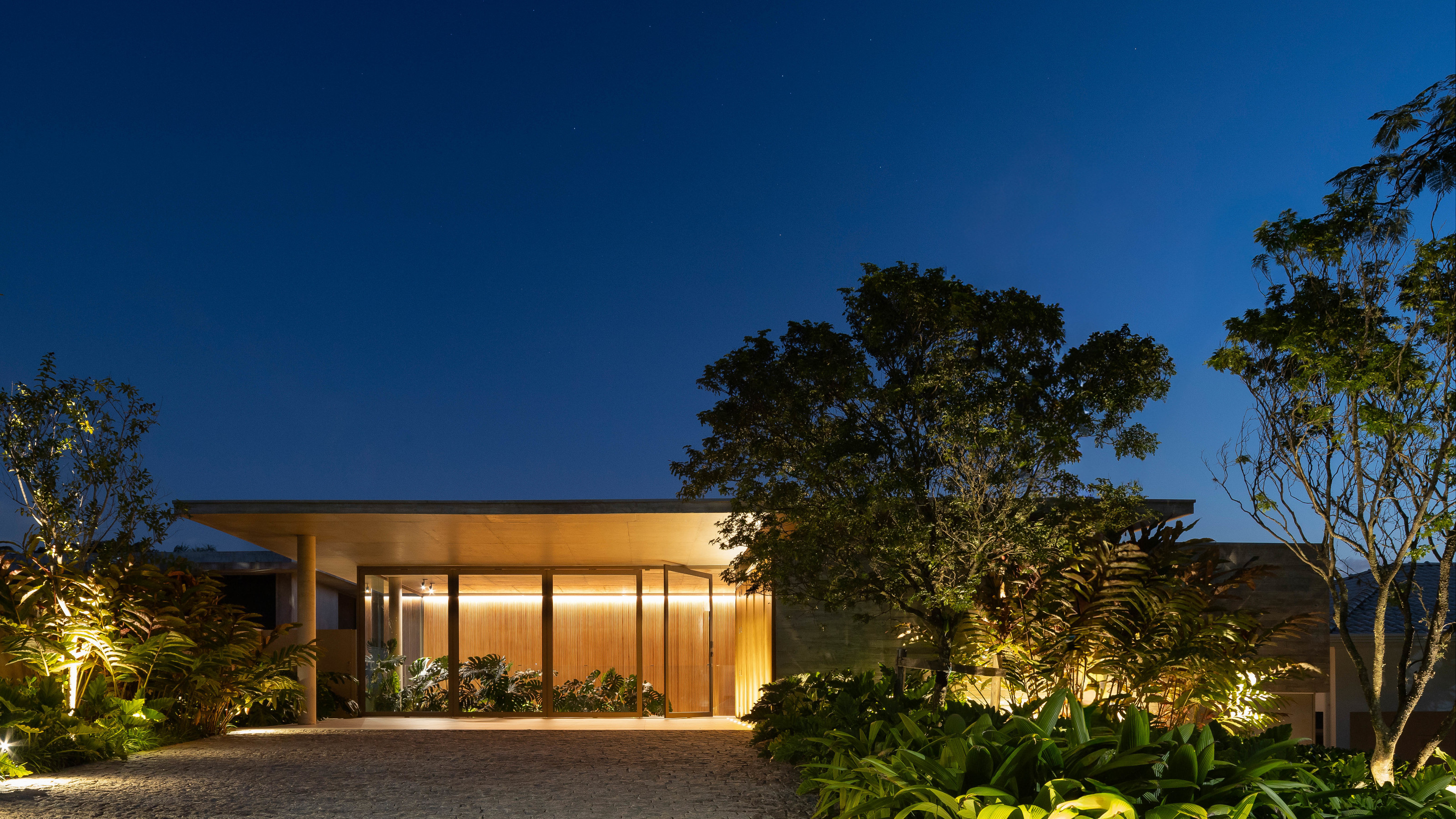 A new concrete house in São Paulo state is designed to open up to its hillside views
A new concrete house in São Paulo state is designed to open up to its hillside viewsArchitects Fernanda Padula and Juliana Risso have shaped this family house in Brazil from meticulously poured concrete forms, precise joinery and a close relationship with the landscape
-
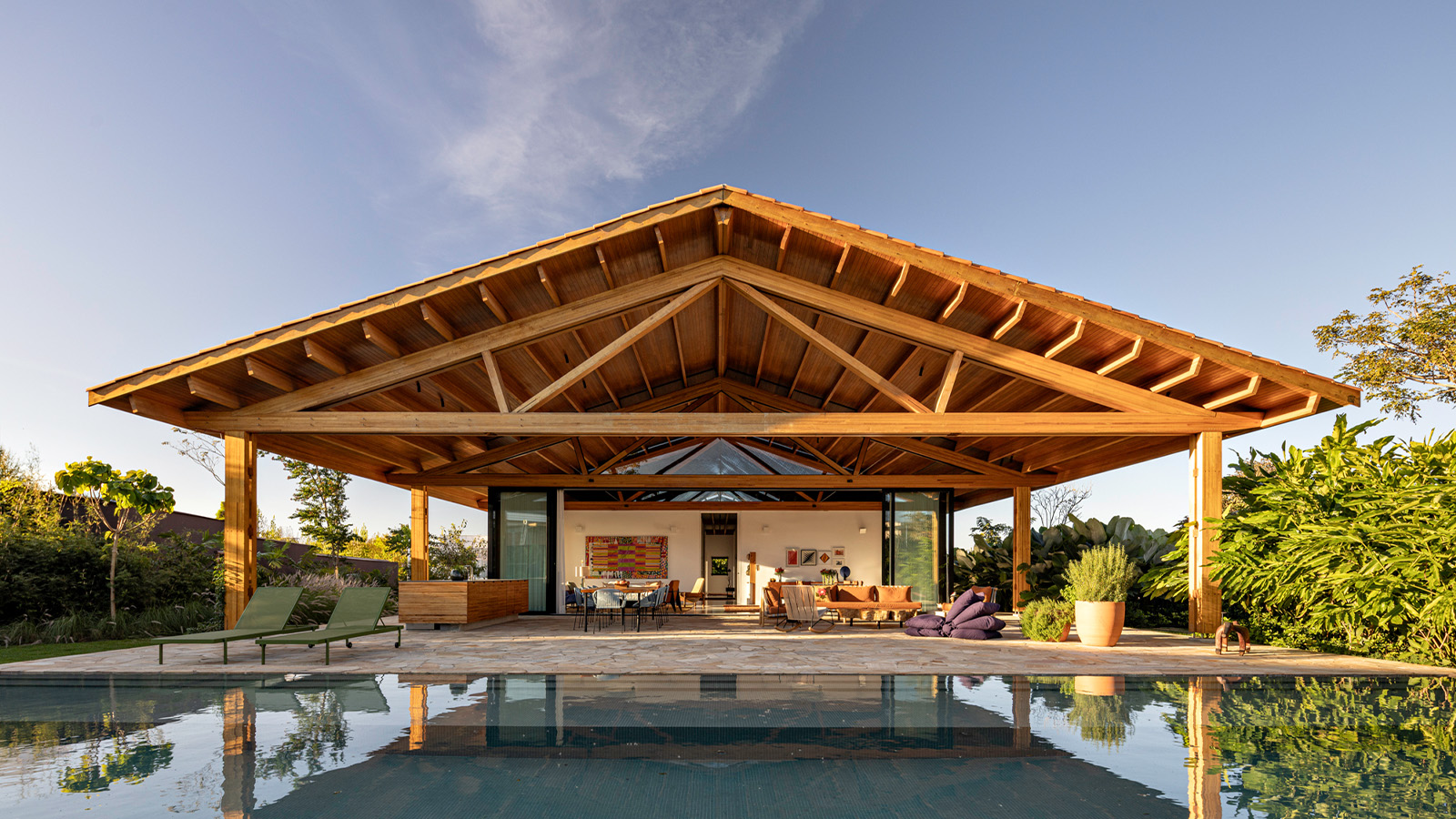 An upstate São Paulo house is rooted in culture and the location that inspires it
An upstate São Paulo house is rooted in culture and the location that inspires itBalancing tradition and modernity, upstate São Paulo house Casa MM by Equipe Lamas is ‘an oasis of intimacy within a residential setting’
-
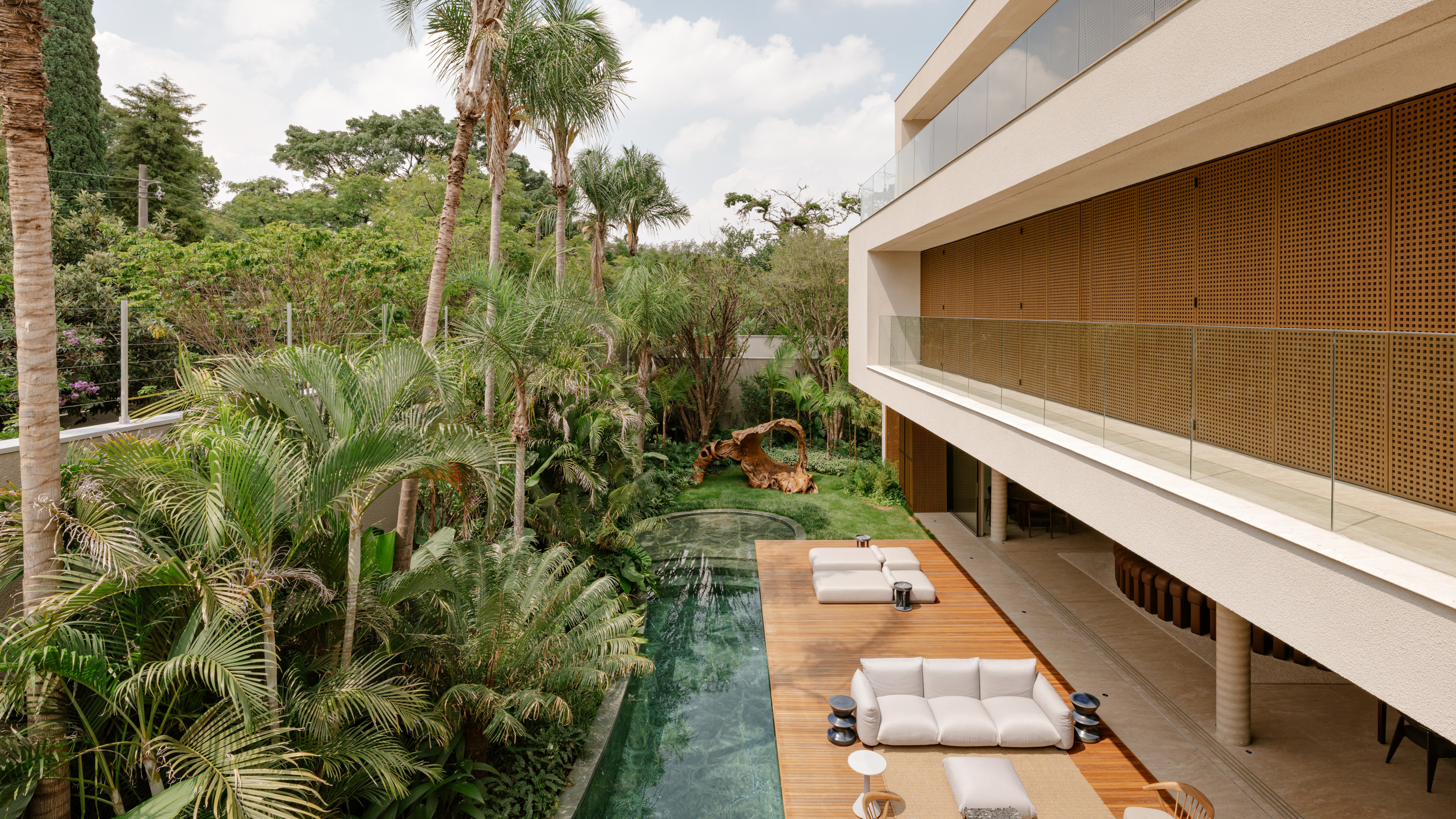 A masterful house in São Paulo invites jungle vegetation, water and natural light in
A masterful house in São Paulo invites jungle vegetation, water and natural light inA house in São Paulo by Meireles + Pavan Arquitetura, FR House, is a richly curated series of spaces designed to create worlds within worlds